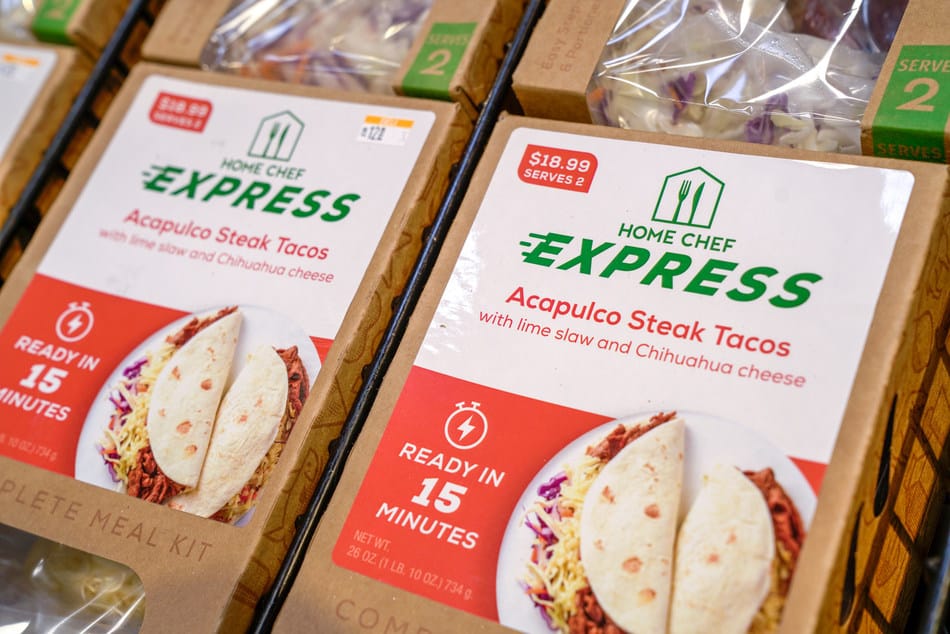A study finds that meal kits are popular with consumers and demand for them could grow. But the original distribution model—selling exclusively online and on a subscription basis—is probably a dead end for at least some meal-kit manufacturers.
Market research firm Packaged Facts projects sales of meal kits will see a 12.3% compound annual growth rate from 2018 to 2023, growing to $5.5 billion in total sales both online and in stores. During that period, Packaged Facts expects meal kits to represent less than half of 1% of overall grocery sales, which is what they represent now.
The two biggest players, Packaged Facts says, are HelloFresh SE (No. 84 in the in the Internet Retailer 2018 Top 1000) and Blue Apron Holdings Inc. (No. 67), which together account for half of meal kit sales.
Packaged Facts says meal kit sales would not be growing at that rate if manufacturers stuck by the online-only, subscription-based model that has shaped the segment so far. The real opportunity, the firm says, comes from working with grocery stores.
“The potential synergies between meal kits and grocery stores are undeniable,” says David Sprinkle, research director for Packaged Facts. “If meal kits are sold at grocery stores and are available for order online with a full suite of other groceries, customers are more likely to remain customers. Additionally, most meal-kit companies would benefit by being able to take advantage of the grocer’s supply chain for fresh ingredients.”
Those supply chain advantages, Packaged Facts says, include the potential for grocers to work with food manufacturers to produce meal kits (or portion-sized packages of ingredients for use in meal kits) and package meal kits under a private label. In addition, some grocers may also have dedicated food preparation employees who could gather the ingredients for meal kits and package them in-store.
Meal kits have been a fast-growing part of the online food marketplace. These companies package fresh-food ingredients that consumers use to cook specific recipes. By measuring and preparing the ingredients for consumers, food-kit companies look to sell an experience—restaurant-style meals that can easily be prepared at home.
Such companies have drawn the attention of venture capitalists. The 12 largest meal-kit companies have raised $1 billion from investors over the last few years, according to Internet Retailer data.

The Kroger Co. debuted Home Chef meal kits in retail locations in October
The upside of working with grocery chains is something the meal-kit companies themselves have increasingly recognized and acted upon. In the past two years, several meal-kit makers have agreed to be acquired by, or form partnerships with, grocery retailers.
For example, earlier this year, Kroger Co. acquired meal-kit manufacturer Home Chef for $200 million. In October, Home Chef and Kroger rolled out meal kits at Kroger-owned supermarkets.
At about the same time, Jet.com, an online marketplace owned by Walmart Inc. (No. 3 in the Top 1000), recently started selling Blue Apron meal kits as part of its grocery delivery service.
For Blue Apron, the Jet deal offers a source of new revenue at a crucial time. The number of people ordering its signature boxes of food to make home-cooked meals dropped 24% in the second quarter compared with the same period last year.
Last September, Albertsons Co. acquired the meal-kit delivery service Plated for an undisclosed amount.
Earlier this year, HelloFresh acquired competitor Green Chef. That acquisition helped HelloFresh surpass Blue Apron as the biggest food-kit company in the United States. HelloFresh was already the largest meal-kit company on a worldwide basis.
